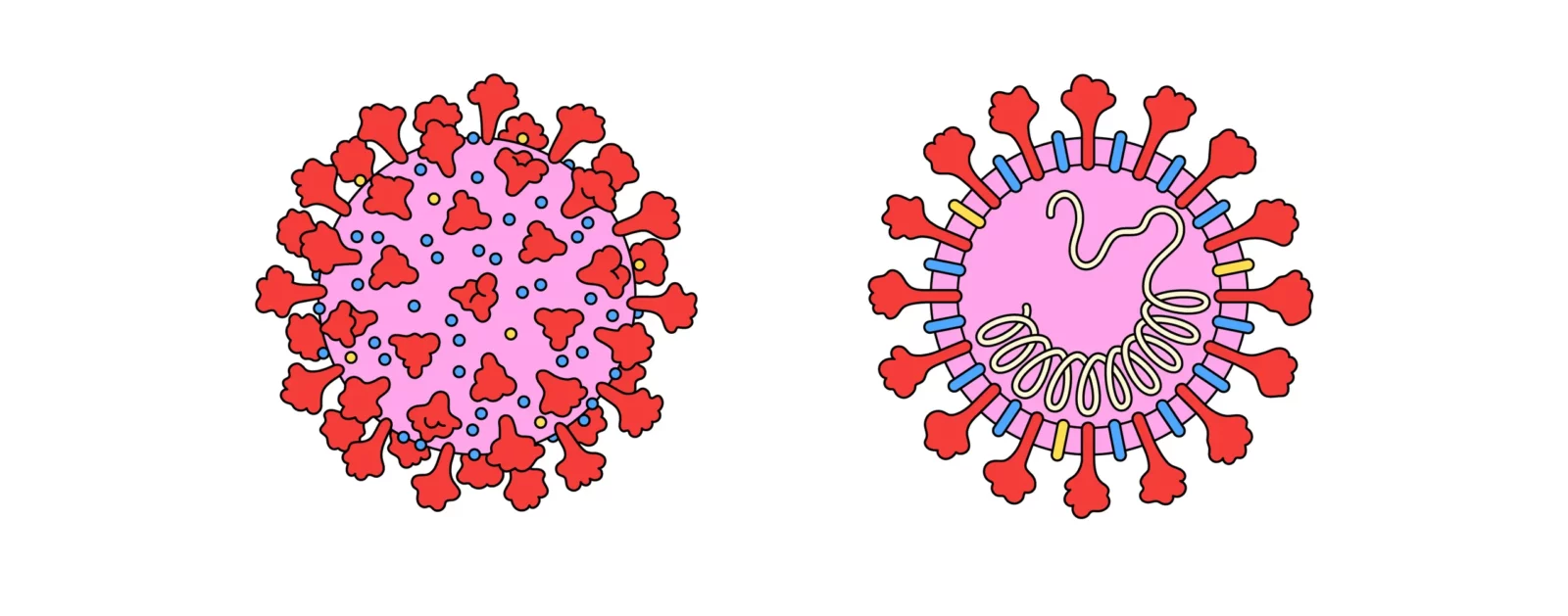The shocking increase of COVID-19 cases throughout the country has many Americans wondering how long the pandemic will last. While no fortune teller can offer a precise timeframe, several medical specialists can provide insight into what the future may promise.
When an infectious illness transitions from a pandemic to an endemic, the virus is discovered in a specific location or among individuals. The main difference in an endemic situation is that the virus is easier to control due to increased population immunity.
The flu virus is an example of endemic viral illnesses that the whole populace is exposed to regularly. Dr. Bernard Camins, the Mount Sinai Health System’s Medical Director for Infection Prevention, believes the Sars-Cov-2 virus will become endemic in the near future.
Dr. Bernard Camins remarked. the concept of endemicity is that it [Sars-Cov-2] returns year after year, especially throughout the winter. When it turns endemic, however, it should only impact a small percentage of the population, not the whole population.
Sars-Cov-2 may take years to stop blocking comprehensive travel plans, emergency visits, and healthcare systems, according to Dr. Camins.
Omicron Is Mostly Asymptomatic, But What About Future Variants?
While instances of the omicron variation are milder than those of previous SARS-CoV-2 strains, another SARS-CoV-2 strain might emerge in the coming months that could represent a more significant threat with a new combination of mutations to be just as lethal as delta.
The majority of the globe is unvaccinated. While most Americans and Europeans are likely to be vaccinated, other nations, such as South Africa and India, are falling behind. Dr. Bettie Steinberg, a virologist at the Feinstein Institutes for Medical Research, believes that more variations will emerge in the future.
Dr. Steinberg thinks that variants that will emerge would have significant variations from the types that we have some immunity to, much like omicron did from South Africa, to give us another rise, adding that he expects further spikes in the future — hopefully short-lived.
Professor of environmental health sciences at Columbia University’s Mailman School of Public Health, Dr. Jeffrey Shaman thinks that the COVID-19 vaccination will provide limited protection, as it did during the delta outbreak.In his opinion, painting a narrative in which the initial variants follow a natural path towards something milder is a poor evolutionary theory.
Dr. Shaman told NBC New York that there are two reasons why the Sars-Cov-2 may cause milder illnesses. On the one hand, a virus that has been in a host for a long time tends to become more transmissible and less virulent.
The dominant, faster-spreading variants would eventually overtake the others, displacing or replacing them. However, according to Dr. Shaman, a virus’s physical mutation capacity is limited.The foundation for a milder virus, on the other hand, is achievable, according to the doctor, because it is unwanted for a disease to kill its carrier.The logic behind is that if a virus kills its host before multiplying and infecting others, it is effectively short-circuiting the virus’s entire purpose for being.
This is true only if the virus is spread before it kills the host. Most Sars-Cov-2 transmission occurs before persons develop symptoms, especially in severe instances.
Furthermore, Dr. Shaman believes that in comparison to the whole population, not enough individuals have perished from Sars-Cov-2. Perhaps 20 million individuals have died from COVID-19 as a result of underreporting, which is a significant figure, but it’s a drop in a population of 7.7 billion hosts, particularly at the pace we reproduce ourselves, added Dr. Shaman.
Are We About to Enter the Endemic Stage?
The harsh news is that only time can tell. There is a probability that the globe may enter a post-pandemic period this year, according to NBC New York. However,the virus may be following a particular pattern. Dr. Shaman presents the example of a future in which the world only sees two versions every year.
In 2022, for example, he thinks there will be three waves and we will be impacted by only one wave in 2023. There would be two waves in 2024 and 2025 and one in 2026.
According to the latest data from the Centers for Disease Control and Prevention, about 60,000,000 instances of COVID-19 have been reported in the United States in the previous 30 days, with over 830,000 fatalities.
On Saturday, almost 90,000 new positive COVID-19 cases were recorded in New York state alone. Nearly half of them, or nearly 47,000 cases, were discovered in New York City.
For the first time since omicron was discovered in the Big Apple, New York Governor Kathy Hochul is “cautiously optimistic” that COVID patterns reflect a reducing rate of increase.
Dr. Rochelle Walensky, the CDC’s director, isn’t confident that omicron has reached its peak in the United States, but she is optimistic after looking at New York’s pretty stable statistics. With more than one in every five COVID tests coming back positive, patients who contract COVID-19 during the omicron spike may have an advantage in terms of immunity.
According to Dr. Steinberg, those new cases may work as a booster when it comes to immunity – at least to that strain. She claims that due to the possibility of other changes, it is still unclear if the current infection will give protection for a future variety. This might confer protection for a period, given the increasing number of people infected with omicron.











Leave a Reply